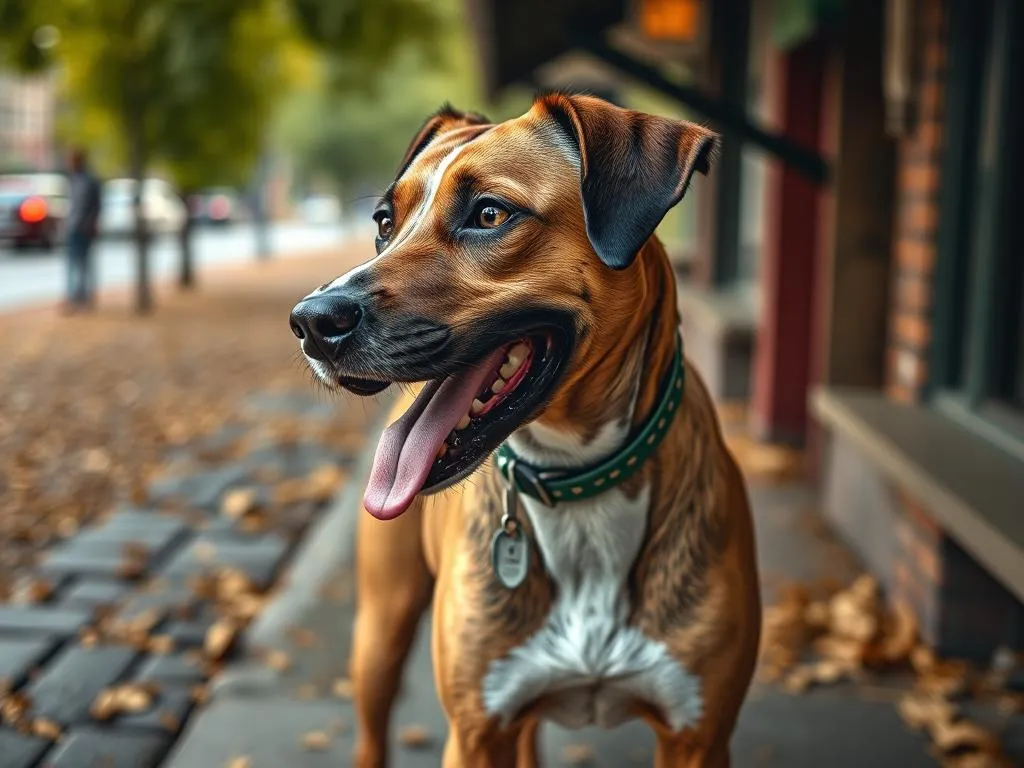
Understanding various dog breeds is essential for potential dog owners, as each breed comes with its unique traits, care requirements, and personalities. Among these breeds, the Pudelpointer stands out for its versatility and distinctive characteristics. This article aims to provide comprehensive information about the Pudelpointer breed, exploring its origin, physical traits, temperament, care needs, and more.
Origin and History of the Pudelpointer
Early Beginnings
The Pudelpointer originated in Germany during the late 19th century. This breed was developed by crossing the Standard Poodle with various pointing breeds, particularly the German Wirehaired Pointer. The goal was to create a versatile hunting dog that could perform well both on land and in water. The Pudelpointer’s ancestry reflects a blend of intelligence, agility, and a strong work ethic, traits that are evident in the breed today.
Purpose of the Breed
Originally, the Pudelpointer was bred for hunting purposes. Its keen sense of smell and excellent tracking abilities made it a valuable asset for hunters. The breed is adaptable to various hunting environments, whether in dense forests, open fields, or marshy areas. Additionally, the Pudelpointer possesses a natural affinity for water, making it an exceptional retriever. This adaptability allows it to excel in multiple roles, including pointing, retrieving, and even as a family companion.
Recognition and Popularity
The recognition of the Pudelpointer by kennel clubs began in the early 20th century. It gained momentum in Europe, particularly in Germany, where it was officially recognized by the German Kennel Club. Over the years, its popularity has slowly grown, particularly among hunting enthusiasts and active families. While it remains less common compared to other breeds, the Pudelpointer has garnered a dedicated following, especially in North America.
Physical Characteristics
Size and Weight
The Pudelpointer is a medium-sized breed, typically standing between 20 to 26 inches tall at the shoulder. Males usually weigh between 45 to 70 pounds, while females weigh slightly less, ranging from 40 to 65 pounds. Their sturdy build and athletic physique contribute to their agility and strength in the field.
Coat and Colors
One of the most distinctive features of the Pudelpointer is its coat. The breed has a dense, water-resistant double coat that can be either curly or wavy, reminiscent of its Poodle ancestry. This coat provides protection against various weather conditions, making it ideal for outdoor activities.
Common color variations include:
- Brown
- Liver
- Black
- Gray
These colors may also appear in various patterns, including solid, roan, or patched.
Distinctive Features
The Pudelpointer has several unique physical traits. Its ears are long and hang close to the head, providing an expressive look. The tail is typically docked but can also be left natural, depending on the owner’s preference. The breed’s build is athletic, with a strong chest and a well-defined neck, contributing to its overall agility and endurance.
Temperament and Personality
General Temperament
The Pudelpointer is known for its friendly and intelligent disposition. This breed is typically eager to please, making it highly trainable and responsive to commands. They are social dogs that thrive on human interaction and companionship, which makes them excellent family pets.
Socialization Needs
Early socialization is crucial for the Pudelpointer. Exposing them to various environments, people, and other animals can help develop their confidence and reduce the likelihood of behavioral issues. They generally get along well with children and other pets, especially when raised together. However, supervision during playtime is always recommended, as their exuberance can sometimes overwhelm smaller animals.
Energy Levels
As a high-energy breed, the Pudelpointer requires regular exercise to stay healthy and happy. Daily activities should include brisk walks, runs, or play sessions. Engaging in mentally stimulating tasks, such as obedience training or scent work, can also help satisfy their energetic nature.
Recommended activities for Pudelpointer owners include:
- Fetch games
- Agility training
- Swimming
- Hiking
Training and Care
Training Techniques
Training a Pudelpointer can be a rewarding experience due to their eagerness to learn. Positive reinforcement methods work best, such as treats, praise, and playtime. Consistency and patience are key, as these dogs respond well to structured training sessions.
Starting training early, including basic commands and socialization, will help ensure your Pudelpointer grows into a well-mannered adult dog.
Grooming Needs
The Pudelpointer requires regular grooming to maintain its coat. Weekly brushing is recommended to prevent matting and reduce shedding. Their water-resistant coat may also necessitate occasional bathing, particularly after outdoor activities.
Seasonal considerations for coat care include:
- Spring and Fall: Increased shedding may require more frequent brushing.
- Winter: Ensure their coat is free from ice and debris after outdoor play.
Health Considerations
While the Pudelpointer is generally healthy, like many breeds, it is prone to certain health issues. Common health concerns include hip dysplasia, eye disorders, and skin allergies. Regular veterinary check-ups and preventive care are essential for maintaining their health.
Recommended health screenings may include:
- Hip evaluation
- Eye examinations
- Skin allergy tests
Living with a Pudelpointer
Ideal Living Environment
The Pudelpointer is adaptable to various living situations. While they thrive in homes with yards, they can also do well in apartments, provided they receive adequate exercise. A secure, fenced area is ideal for off-leash play, but daily walks and mental stimulation are crucial for their well-being.
Daily Routine
A typical daily routine for a Pudelpointer should include:
- Exercise: At least 60 minutes of physical activity daily.
- Feeding: High-quality dog food appropriate for their age, size, and activity level.
- Training: Short training sessions throughout the day to reinforce commands and good behavior.
Integrating a Pudelpointer into family life can be seamless, as they are generally adaptable and eager to participate in family activities.
Activity Recommendations
Due to their active nature, Pudelpointer owners should engage in various activities to keep them stimulated. Some fun options include:
- Agility Courses: Encouraging their natural athleticism and intelligence.
- Obedience Trials: Strengthening the bond between dog and owner.
- Water Sports: Retrieving games and swimming, tapping into their love for water.
Comparison with Other Breeds
Pudelpointer vs. Standard Poodle
The Pudelpointer and Standard Poodle share a common ancestor, which results in some similarities. Both breeds are intelligent and trainable, but the Pudelpointer tends to be more versatile as a hunting dog. In contrast, the Standard Poodle is often seen in companion roles and dog shows. Appearance-wise, Pudelpointers have a denser coat that is less hypoallergenic than the Poodle’s curly fur.
Pudelpointer vs. German Wirehaired Pointer
While both breeds excel in hunting, the Pudelpointer often has a more mellow temperament compared to the energetic German Wirehaired Pointer. The Pudelpointer also boasts a water-resistant coat, making it particularly adept at retrieving in water, whereas the German Wirehaired Pointer’s coat is designed for harsher terrain.
Choosing the Right Breed
When deciding between breeds, consider factors such as activity level, grooming requirements, and temperament. The Pudelpointer may be a suitable choice for active individuals or families who enjoy outdoor activities, while other breeds may be better suited for more relaxed lifestyles.
Conclusion
The Pudelpointer is a unique dog breed that combines intelligence, versatility, and a friendly temperament. Its adaptability makes it suitable for various lifestyles, whether as a hunting companion or a family pet. If you’re considering adding a Pudelpointer to your home, be prepared for an active, loving, and loyal companion.
In summary, the Pudelpointer stands out due to its rich history, physical characteristics, and engaging personality. This breed can bring joy and fulfillment to active families and individuals who appreciate the outdoors.
FAQs about Pudelpointer
What is the average lifespan of a Pudelpointer?
The average lifespan of a Pudelpointer is typically around 12 to 14 years, depending on genetics and overall health.
Are PudelPointers good with children?
Yes, Pudelpointers are generally friendly and good with children, making them excellent family pets.
Do PudelPointers shed?
While Pudelpointers have a dense coat, they do shed, but regular grooming can help manage this.
What kind of training do PudelPointers require?
Pudelpointers benefit from early socialization and consistent, positive reinforcement training methods.
Are PudelPointers suitable for apartment living?
Yes, Pudelpointers can adapt to apartment living as long as they receive sufficient exercise and mental stimulation daily.









